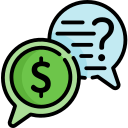Forecasting Financial Success in Small Enterprises
Chosen theme: Forecasting Financial Success in Small Enterprises. Welcome to a practical, uplifting space where owners learn to see tomorrow’s numbers today, make calmer decisions, and turn small, steady forecasts into durable confidence. Join the conversation and subscribe.

Why Forecasting Matters for Small Enterprises
From Guesswork to Guidance
Many small enterprises rely on intuition until a simple forecast exposes where cash tightens, demand rises, and marketing actually pays. That shift transforms late-night anxiety into evidence-backed decisions, mapping resources to goals with pragmatic clarity.
Confidence for Stakeholders
When owners present forecasts tied to realistic drivers, lenders and teammates see discipline rather than dreams. Transparent assumptions and ranges reduce friction, invite useful critique, and build trust that survives unexpected bumps.
Invite Your Voice
How do you currently predict next month’s sales? Share one habit that helps or hurts your numbers in the comments, and subscribe to get our small-enterprise forecasting checklist in your inbox.
Data Foundations: What to Track Before You Forecast
Revenue and Demand Signals
Segment revenue by product, channel, and customer cohort. Track unit economics, repeat rates, and lead-to-close time. These signals reveal which levers truly drive tomorrow’s cash, not just last quarter’s headlines.
Expense Patterns and Seasonality
Separate fixed, variable, and discretionary expenses. Note seasonal spikes in labor, shipping, and utilities. A bakery’s December overtime or a nursery’s spring inventory surge should be modeled, not wished away.
Engage With a Checklist
Comment with the three metrics you can reliably gather weekly. We will compile reader favorites into a practical starter template and send an update to subscribers with examples and pitfalls to avoid.

Methods That Work: Practical Forecasting Approaches
Plot rolling averages and moving medians to smooth noise, then project cautiously using recent trends. Add seasonality factors from prior years. Small teams gain clarity without hiring a data scientist or buying heavy software.
Methods That Work: Practical Forecasting Approaches
Map revenue to drivers like leads, conversion rate, and average order value. Simple regressions test sensitivity. If marketing doubles leads, where will service capacity bottleneck? Modeling this interplay prevents fragile growth and nasty fulfillment surprises.
Build a 13-Week Cash Flow
Forecast receipts and disbursements weekly. Include taxes, debt service, and inventory buys. Owners often spot fixable timing gaps—like aligning supplier terms with customer payments—long before they implode into emergency overdrafts.
Collections, Terms, and Buffer
Nudge invoices early, offer small discounts for speed, and negotiate payment terms that match your sales cycle. Maintain a modest cash buffer. Forecasts improve instantly when collections behavior becomes intentional and measured.
Signals Dashboard
Set alerts for low cash coverage, slipping gross margin, or inventory aging. A simple weekly dashboard keeps everyone honest and focused. Reply with the one metric you want pinned on your office wall.
Tools, Habits, and Cadence
Start in a Spreadsheet
Use a clear tab for assumptions, another for calculations, and a clean summary. Lock cells, version monthly, and annotate logic. The goal is comprehension and collaboration, not mysterious perfection.
Automate Inputs
Pull bank feeds and sales data into your model with lightweight connectors or scripts. Automatic ingestion reduces errors and frees your attention for judgment, tradeoffs, and conversations with customers and partners.
Ritualize Reviews
Hold a short weekly forecast stand-up. Celebrate accurate calls, examine misses without blame, and update assumptions transparently. Invite your team to subscribe for updates so everyone learns together and contributes sharper inputs.
Measuring Accuracy and Learning From Misses
Track Error, Not Ego
Calculate MAPE or absolute variance monthly. Publish results internally. Accuracy improves when teams treat misses as experiments, not failures, and commit to incremental refinements rather than dramatic, last-minute overhauls.
Document Assumptions
Write down the story behind every percentage. A catering company once overestimated wedding season, but its notes revealed a competitor’s closure had skewed last year. Documentation turned embarrassment into insight and better segmentation.
Community Learning
Post one forecast chart and a question for peers below. Which assumption deserves the hardest challenge? Your dialogue helps refine our future guides and delivers real-world perspective to fellow owners.
